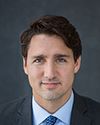I can actually provide answers to some of those questions, but I believe we should take notice and get back to you with more details. I think that's fair.
As for the new funding that's in supplementary estimates (B), it's $469 million. I think I went through a lot of the various parts of that.
One of the things that is actually available on the Internet was this. We went through and did an evaluation of the energy efficiency programs that ran for the last five years. For example, just on some of the reductions we got coming out of that, we anticipate that the total anticipated reductions to date are about 30 megatonnes annually by 2020. For instance, for energy efficiency initiatives, we're calculating that there will be about 20 megatonnes. For renewable energy and clean electricity programs, we're estimating about 6 megatonnes. For clean fossil fuels and alternative funding, we're estimating about 4 megatonnes. In Tom's area, in pulp and paper transformation, we're estimating 1.4 megatonnes.
Again, we do that calculation. It's one of the measures we use to see if these programs are targeted. We looked at how much it cost for the programs, per megatonne, to determine whether they were effective or not effective. That was one of the factors that drove the whole new generation of programs we're funding through supplementary estimates (B).
In terms of carbon capture and storage, we are committed to a number of major projects. We can get you the specifics on those. It's about $1 billion, federally. On some of the numbers—and here again, I am going by memory—when you look at federal, provincial and private sector funding, I think the total spending on carbon capture and storage is about $7 billion. There is a significant investment.
In my three minutes, that's an overview of what we're spending.



